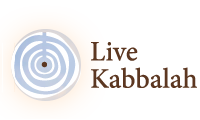The parashot Nitsavim and VaYelekh are sometimes recited together and sometimes on consecutive Shabbatot. The reason for this is that the Hebrew calendar year adapts to changes so that the cycle of the readings of the parashot in the Torah would end precisely on Shmini Atseret when Simhat Torah is celebrated. According to the Kabbalah, Simhat Torah is the conclusion of Rosh Hashana that begins on the first day of Tishrei. This day is the actual beginning of the New Year when the spiritual bonds of the prayers of Rosh Hashana (New Year), Yom Kippur (Day of Atonement) and Sukkot (Tabernacles) are activated and begin to materialize, which is also the reason that the prayers for rain are said on this day (rain, in Hebrew is Geshem, that means also, materialization).
Aseret Yemei Teshuva (The Ten Days of Repentance, lit. “Return”) are the ten days between Rosh Hashana and Yom Kippur, and are unique in bringing us closer to the Creator. The meaning of Teshuva is a return to the original, pure soul, and as the true part of the Creator, being all we can really be. The ten days of Teshuva have the attribute of a new beginning, starting from scratch, erasing the failures and pains of the past year and beginning a life filled with Light.
The Rambam (Maimonides), in “Hilkhot Teshuva (2:6), wrote: “Although teshuva and lamentations are good things in the world, the days between Rosh Hashana and Yom Kippur are the most wonderful and are immediately received, as is written ‘seek G-d when He is to be found’.”
This rule holds true for the individual, the Rambam continues, “…however, when the public repent and beseech with all their heart, they are answered, as is written, G-d our Lord whenever we call out to Him”. We can see from this how much power and help we can get from a supportive environment, for the process of our personal Tikkun.
The Sabbath between Rosh Hashana and Yom Kippur is known as “Shabbat Teshuva” or “Shabbat Shuva”. The meaning of Teshuva is return, but Shuva derives from the Haftara in the book of Hosea, which opens with the verse “Shuva (Return) O Israel to the Lord your G-d, for you have stumbled in your iniquity”. Shuva is a call to return; the Prophet is calling the nation of Israel to return to G-d and to its inner purity.
In the Talmud, Tractate Yoma, Reish Lakish states that when one who is immersed in spiritual work repents, the sins that he perpetrated with malice in the past become less severe, on par with sins committed unintentionally. The Talmud then questions, haven’t we already encountered elsewhere an incident where Reish Lakish went too far in saying that with the power of Teshuva, even malicious deeds are rendered meritable. The Talmud then relates each of the passages to a different scenario. In the language of the Kabbalists, Teshuva that is performed out of fear is called “Teshuva Tatha’a” (Lower level Teshuva). This kind of Teshuva can be the result of an outside compelling force, a demand or fear. It has the power to turn sins that were committed with intentional forethought to ones committed inadvertently. However, the Teshuva performed when one repents out of love, out of an intense desire to connect to the Light and to goodness, is “Teshuva Ila’a” (Higher level Teshuva), which has the power to change the past and turn darkness to Light, bitter to sweet, and malice to merit. Shabbat Teshuva has the very special attribute of bringing us this kind of repentance.
In Parashat VaYelekh, it is written “and Moses went…” The Zohar asks, where did Moses come from and where did he go? The Zohar explains that Moses’ going is like the setting of the sun. Sunset brings the night, the darkness and all that this entails. The era after Moses’ departure is akin to the night, following forty years during which he led the people through miracles and spiritual revelations that had not been experienced before or since. The sun, says the Zohar, must set in order to allow the moon to shine its light. The moon is Joshua and the people of Israel who can now shine their light, take initiative, and act according to the teachings of Moses. The Creator promises Moses that his light will continue to shine. The Zohar tells us that when the moon lights up the night, it is actually the sun that continues to light up the world through the moon. Moses tells Joshua “you shall go” (Deuteronomy 31:7), and “you shall bring” (Deuteronomy 31:23). In this way, it is the light of Moses that will continue to enlighten the world until the Tikkun of humanity is completed and the Mashiah arrives, bringing an end to darkness and suffering. It is this light that will bring redemption and manifest the teachings and life of Moses (Zohar Sulam, VaYelekh, verse 15). In Parashat VaYelekh there are 30 (Lamed) verses, parallel to the large “Lamed” in Parashat Nitsavim. The letter Lamed, according to the Sefer Yetsira (Book of Formation), created the astrological sign of Libra, the month of Tishrei. “Lamed” is the only Hebrew letter that rises above the top line, and this ascent symbolizes the connection to the Upper World, the Olam Haba, the Sephira of Bina from where we receive life in the coming year.
May this Shabbat be filled with Light and Teshuva of love.
To listen to the weekly Zohar Study click here
For additional study on VaYelekh and other portions enter Live Kabbalah University
